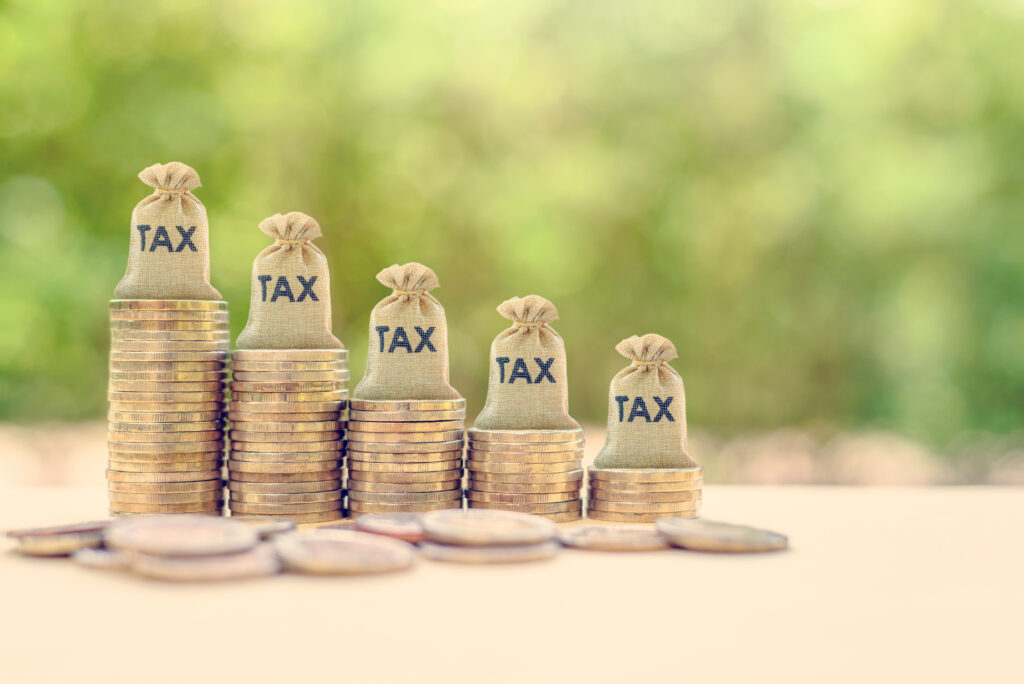
The information provided is based on the published date.
Key takeaways
- Short-term capital gains tax is due when you sell an investment held for one year or less for a profit
- Short-term gains are taxed as ordinary income, usually at higher rates than long-term capital gains
- Gains must be reported on tax forms each year to avoid penalties
- Collectibles and small business stock have special short-term capital gains tax rules
When an investor makes a profit from an investment held for a year or less, they are required to pay a short-term capital gains tax.
What are the rates, how do they compare to long-term gains, and can you reduce your tax responsibility?
This article addresses these questions directly, offering clear explanations and effective strategies.
How do short-term capital gains work?
Short-term capital gains tax is due when an investor profits from selling an investment, specifically capital assets, held for a year or less.
Capital assets include different kinds of property, such as houses, vehicles, stocks, bonds, art, and various other collectibles.
Understanding the nuances of these gains is vital, as their tax treatment varies from long-term gains.
Long-term gains pertain to profits earned from holding a capital asset for over a year and can substantially impact your tax liability.
The determination of these gains is influenced by various factors, such as the asset’s holding period and the individual’s income level.
These factors affect how much of your profits end up in your pocket and how much goes to the IRS.
Taxation of short-term capital gains
The significance of the one-year threshold lies in the tax implications. Short-term gains are taxed as ordinary income.
So, if your ordinary income tax rate is above 20%—the long-term capital gains tax rate for most taxpayers—your short-term tax rate can be significantly higher.
Factors affecting short-term capital gains
Several factors influence the calculation of short-term capital gains.
Acquisition basis
The acquisition basis is the amount you originally paid for an asset. This amount is subtracted from the price you sell the asset to determine the gain or loss.
Disposition basis
The disposition basis determines the total amount received when selling the asset. The disposition basis directly impacts your short-term capital gains, as it is taxed as ordinary income.
Taxable income
Your income level, particularly taxable income, also significantly affects your short-term capital gains taxes.
The tax rate tends to be higher with increased income, indicating a progressive tax structure.
As such, individuals in the highest income brackets could face a more significant tax bill on their short-term capital gains than those in lower brackets.
Tax implications of short-term capital gains

Short-term capital gains carry significant tax implications that can heavily impact your overall tax liability.
The tax rates for these gains align with ordinary income tax rates, ranging from 10% to 37% based on your income level. Consequently, high-income earners may encounter a hefty tax bill on their short-term capital gains.
This difference in tax rates underlines the importance of considering timing when selling assets.
If you’re on the cusp of holding an asset for one year, waiting a little longer to sell could potentially save you a significant amount in tax.
Reporting short-term capital gains
Reporting your gains to the Internal Revenue Service (IRS) requires specific forms and a thorough understanding of the rules.
To report short-term capital gains to the IRS, you need to complete the following forms:
- Form 8949: Provide details such as the date you acquired and sold the asset, the proceeds from the sale, and the gain or loss you realized.
- Schedule D (Form 1040): This form summarizes your capital gains and losses from Form 8949.
- Form 1099-B: Your broker provides this form; it contains the necessary information to complete Form 8949.
It’s essential to report these gains to avoid IRS penalties. If you’re unsure how to report your short-term capital gains, consider consulting a tax advisor to ensure you do it correctly.
Strategies for reducing short-term capital gains taxes

Although short-term capital gains taxes can significantly reduce your profits, you can minimize these taxes through various strategies.
Such strategies include:
- Holding assets for over a year
- Making use of tax-advantaged accounts
- Applying tax-loss harvesting strategies
These strategies can aid in optimizing your investment decisions and lowering your cumulative tax burden.
However, it’s essential to note that these strategies should align with your risk tolerance and overall financial goals.
What works best for one person may not be suitable for another, so it’s always a good idea to consult a financial advisor before making significant changes to your investment strategy.
Holding assets longer
One straightforward strategy to reduce your tax on capital gains is to hold your assets for more than a year.
By doing so, you can qualify for long-term capital gains tax rates, generally lower than short-term rates.
This can help you save money on your tax bill. This includes certain assets such as:
- stocks
- bonds
- ETFs
- mutual funds
This strategy requires patience and a long-term perspective. It may not be suitable for everyone, especially if the asset’s value is declining rapidly.
Therefore, it’s crucial to consider your financial goals and the asset’s performance before deciding to hold on for a more extended period.
Utilizing tax-advantaged accounts
Tax-advantaged accounts such as Individual Retirement Accounts (IRAs), 401(k)s, and Roth accounts offer another avenue to reduce your short-term capital gains taxes.
Investments within tax-advantaged accounts like IRAs, 403(b)s, 401(k)s, and others grow tax-deferred, meaning you won’t owe taxes on your gains until you make withdrawals.
In Roth IRAs and Roth 401(k)s, your contributions come from post-tax money, but your retirement distributions (after 59½) are tax-free.
However, there are limitations and rules to using these accounts, including contribution limits and penalties for early withdrawals.
Therefore, it’s crucial to understand the specifics of each account type and consider your financial situation and retirement goals before choosing this strategy.
Employing tax-loss harvesting
Tax-loss harvesting involves selling losing investments to offset the capital gains tax liability.
This strategy can be particularly valuable in years when you realize significant capital gains and need a way to offset the associated tax liability.
However, successful tax-loss harvesting requires careful planning and knowledge about the specifics of tax laws.
For example, the IRS’s wash sale rule prohibits taxpayers from claiming a loss on the sale of an investment if they purchase a ‘substantially identical’ investment within thirty days before or after the sale.
Consulting with a tax professional before implementing this strategy is crucial.
Exceptions and special cases for short-term capital gains taxes

While the general rules for short-term capital gains taxes have been outlined, you should be aware of several exceptions and special cases.
These include the treatment of collectibles and qualified small business stock, which have unique tax rules that differ from the typical short-term capital gains tax treatment.
Understanding these exceptions and special cases is essential, as they can significantly impact your overall tax liability.
Collectibles and special assets
Collectibles and special assets, such as works of art, rugs, antiques, certain metals, and coins, are subject to unique tax treatment.
Short-term capital gains on these items are subject to a maximum tax rate of 28%, which is higher than the typical long-term capital gains tax rate.
However, the rules surrounding collectibles and special assets can be complex, so keeping accurate records of your transactions is essential.
Additionally, you should consult with a tax professional to ensure you’re accurately reporting these items on your tax return.
Qualified small business stock
Qualified Small Business Stock (QSBS) is another special case when it comes to short-term capital gains taxes.
To qualify, the business must be a US C-corporation with gross assets of $50 million or less, and at least 80% of the company’s assets must be used in a qualified trade or business.
The tax treatment for short-term capital gains on QSBS differs from other asset types. If you hold the stock for more than five years, up to 100% of the gain on the sale of QSBS may be excluded from federal income tax.
This can be an excellent opportunity for investors in small businesses to receive significant tax benefits.
Impact of state taxes on short-term capital gains

In addition to federal taxes, you should also consider the impact of state taxes on your short-term capital gains.
State tax rates can significantly vary, and this can add a considerable amount to your overall tax bill. Some states, however, do not impose taxes on short-term capital gains, providing a tax advantage for those residents.
- Alaska
- Florida
- New Hampshire
- Nevada
- South Dakota
- Tennessee
- Texas
- Wyoming
If you live in one of these states, you may be able to save on your tax bill.
While state income taxes, including the Net Investment Income Tax (NIIT), can substantially elevate the overall tax burden on short-term capital gains, strategies are available to manage these additional costs.
These include taking advantage of state-specific deductions and credits and considering the tax implications of state residency to offset capital gains.
State tax rates and regulations
The state tax rates for short-term capital gains vary significantly across states.
For example, New York imposes a maximum tax rate of 8.82%, Oregon levies 9.9%, Georgia at 5.75%, Hawaii at 7.25%, Idaho at 5.80%, and Illinois at 4.95%.
Furthermore, state residency plays a crucial role in determining your state taxes on short-term capital gains. You must report and pay taxes on these gains in the state where you are considered a resident.
Each state has distinct rules for determining residency for state income tax purposes, typically based on factors such as your home. Many states use the “physical presence test,” which means you have lived in the state for a certain number of days during the year.
Other factors that can establish residency include maintaining a driver’s license, registering to vote, owning or leasing property, and having significant social and professional ties to the state.
Strategies for navigating state taxes
Managing state taxes on short-term capital gains can be challenging, but strategies are available to help.
Using state-specific deductions and credits can potentially reduce your tax bracket, thereby lowering the amount of tax you owe.
Additionally, considering your state of residency can also have a significant impact on your tax liabilities. Only residents who meet specific income thresholds may be subject to capital gains taxation in some states.
Moreover, tax planning strategies such as matching asset location and investment choice, taking a longer-term view, and monitoring distributions can help manage your state tax liability.
Utilizing tax-loss harvesting strategies and deferring capital gains taxes through reinvestment can also be beneficial in managing your tax liability.
Final word
Navigating the complexities of short-term capital gains taxes doesn’t have to be daunting. You can maximize your earnings by understanding the fundamentals, considering the impact of state taxes, recognizing exceptions and special cases, and employing strategic tax-reducing strategies.
Remember, every financial situation is unique, and what works best for one person may not work for another. Therefore, it’s always beneficial to consult with a tax professional or financial advisor to ensure you make the best financial decisions.
Frequently Asked Questions
How much short-term capital gain is taxable?
Short-term capital gains are generally taxed at the same rate as your ordinary income, ranging from 10% to 37%.
Are short-term capital gains considered taxable income?
Yes, short-term capital gains are subject to taxation as ordinary income at graduated tax rates.
What are short-term capital gains?
Short-term capital gains are profits from the sale of investments held for a year or less.
What strategies can I employ to reduce my short-term capital gains taxes?
To reduce your short-term capital gains taxes, consider holding your assets for over a year, using tax-advantaged accounts, and implementing tax-loss harvesting strategies. These can help minimize your tax burden effectively.
What are some exceptions and special cases in short-term capital gains taxes?
Some exceptions in short-term capital gains taxes include collectibles and qualified small business stock, each with its own specific tax treatment.
Facet
Facet Wealth, Inc. (“Facet”) is an SEC registered investment adviser headquartered in Baltimore, Maryland. This is not an offer to sell securities or the solicitation of an offer to purchase securities. This is not investment, financial, legal, or tax advice. Past performance is not a guarantee of future performance.


